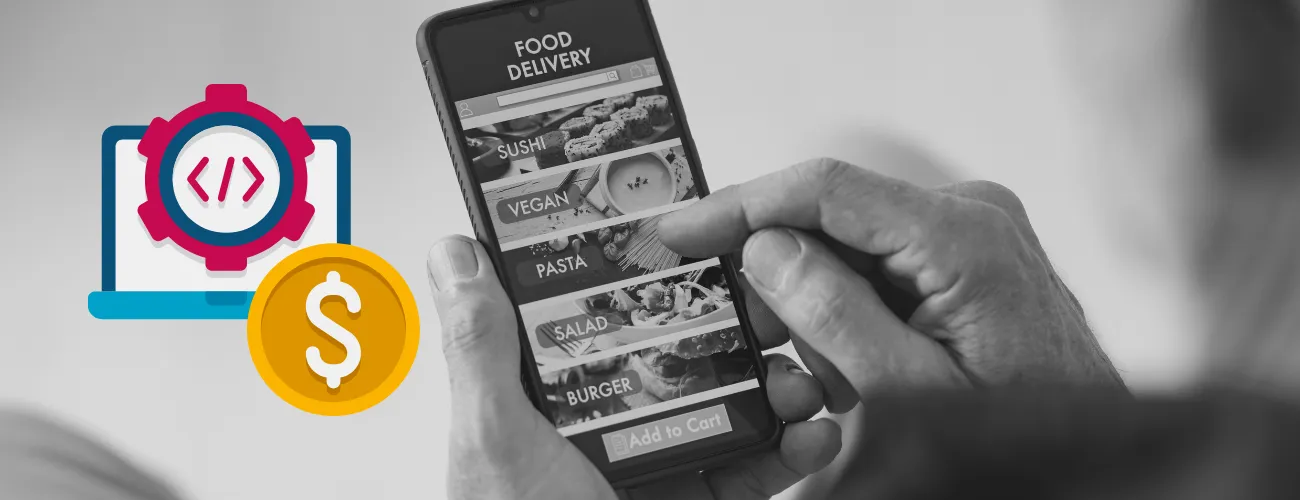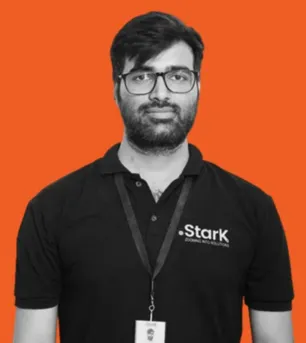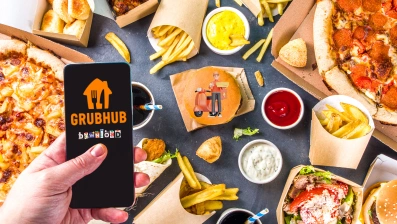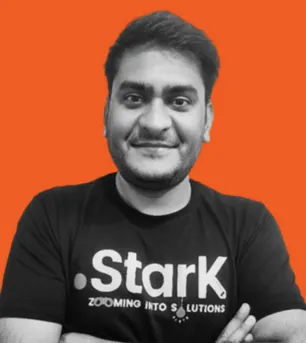Thinking of entering the food delivery industry?
With the industry expected to grow even further in 2025, now is a great time to invest in creating your food delivery app.
But before diving in, you're probably wondering: How much does it cost to create a food delivery app?
The cost to build a food delivery app can range from $30,000 to $150,000 or more, depending on its complexity, features, and technology stack.
Basic apps with essential features tend to fall on the lower end, while feature-rich solutions like Uber Eats or DoorDash clones lean toward the higher end.
In this blog, we'll walk you through everything you need to know—from the reasons to build a food delivery app to the hidden costs of food delivery app development and ways to minimize your budget.
Let’s jump right in!
Reasons to Build a Food Delivery App in 2025
The food delivery industry is booming, and 2025 promises even more opportunities for businesses venturing into this space.
Here are three major reasons why you should build a food delivery app:
1. Unstoppable Market Growth
The global food delivery market is projected to grow at a compound annual growth rate (CAGR) of over 10% by 2030.
With evolving consumer habits and increasing reliance on convenience, the demand for food delivery apps has skyrocketed.
By entering the market now, you position yourself at the forefront of this digital dining revolution.
2. Endless Revenue Potential
From delivery fees to subscription models and restaurant partnerships, food delivery apps offer multiple monetization avenues.
The cost to create a food delivery app is an investment that can yield significant returns when paired with a robust business strategy.
Whether you're targeting a local market or aiming for a global audience, the earning potential is immense.
3. Consumer Expectations Have Changed
Today's customers expect fast, user-friendly solutions to meet their needs.
A well-designed app not only meets these expectations but also builds brand loyalty and trust.
By offering features like live tracking, secure payments, and personalized recommendations, you can cater to these evolving needs effectively.
The numbers and trends are clear—2025 is the right time to dive into the food delivery space. Ready to explore the cost to build a food delivery app? Let’s dig deeper.
Average Cost to Develop a Food Delivery App in 2025
When planning your food delivery app, one of the first questions you’ll ask is, “How much will it cost to make this app?”
The cost to build a food delivery app depends on various factors like app complexity, development team rates, and the feature set you choose.
Basic Food Delivery App | Features: User registration, restaurant listing, basic search, and order placement. | Estimated Cost: $15,000 to $40,000. |
Mid-Range Food Delivery App |
|
|
Advanced Food Delivery App |
|
|
Now that you have a general idea of the average cost, let’s look at the specific factors that influence the cost to build a food delivery app in detail.
For more details, it’s highly recommended that you consult, app development company.
Factors That Affect Cost To Build A Food Delivery App
Developing a food delivery app involves various factors that influence the overall cost.
Below is a detailed breakdown of each factor to give you a clear understanding.
► Features and Functionalities
The features and functionalities you choose play a major role in determining the cost to create a food delivery app.
Basic features like user registration, order placement, and payment integration form the foundation and cost less.
Advanced features such as real-time order tracking, AI-based recommendations, and loyalty programs require more time and expertise, increasing the budget.
For instance, a live order tracking system might cost $2,000–$5,000, while integrating advanced analytics could range from $10,000–$20,000.
Striking a balance between must-have and nice-to-have features helps you manage the overall food delivery app development cost efficiently.
Feature Type | Estimated Cost | Remarks |
Basic Features | $5,000–$10,000 | User registration, payment integration, etc. |
Intermediate Features | $10,000–$20,000 | Push notifications, geolocation, etc. |
Advanced Features | $20,000–$50,000+ | AI, analytics, loyalty programs, etc. |
By carefully selecting features, you can ensure your app is both functional and cost-effective.
► Platform Choice
Your platform choice - iOS, Android, or both - directly impacts the cost to build a food delivery app.
A single-platform app is more budget-friendly, ranging from $30,000–$60,000.
However, cross-platform development, using tools like Flutter or React Native, offers a cost-effective way to target both platforms at $50,000–$100,000.
If you opt for native apps for both platforms, costs can exceed $150,000 due to separate development efforts.
Choose the platform based on your audience to get the best return on your investment.
Platform | Estimated Cost | Remarks |
Single Platform (iOS/Android) | $30,000–$60,000 | Ideal for targeting a single user base. |
Cross-Platform | $50,000–$100,000 | Cost-effective, covers both platforms. |
Native for Both Platforms | $100,000–$150,000+ | Best performance but higher cost. |
Understanding your target audience’s platform preferences ensures you make a cost-efficient choice.
► UI/UX Design
Investing in user-friendly UI/UX design significantly impacts user retention and the cost of food delivery app development.
A simple design costs $5,000–$10,000 and includes minimal customization.
On the other hand, custom designs with animations and advanced themes may cost $15,000 or more.
For instance, adding interactive elements like animations can cost an additional $5,000–$10,000 but elevates the user experience.
A well-thought-out design enhances usability and can set your app apart in a competitive market.
Design Type | Estimated Cost | Remarks |
Basic Design | $5,000–$10,000 | Simple, minimalistic interface. |
Custom Design | $10,000–$20,000 | Interactive, branded, visually appealing. |
Advanced Interactive Design | $20,000+ | Includes animations, AR/VR, etc. |
A thoughtfully designed UI/UX not only attracts users but also ensures they stay loyal to your app.
► Backend Development
The backend development forms the core of your app, handling processes like order management, real-time updates, and data storage.
A simple backend costs $10,000–$20,000, suitable for apps with basic functionalities.
For scalable systems that handle high traffic, costs can range from $30,000–$50,000 or more.
For example, a real-time order management system can add $5,000–$10,000 to the overall cost to create a food delivery app. Investing in a robust backend ensures smooth operations and scalability as your user base grows.
Backend Type | Estimated Cost | Remarks |
Simple Backend | $10,000–$20,000 | Basic data handling and operations. |
Scalable Backend | $20,000–$30,000 | For apps with high traffic. |
Advanced Backend | $30,000–$50,000+ | Real-time updates, AI, advanced analytics. |
A well-built backend is critical for seamless performance and future scalability.
► Third-Party Integrations
Third-party integrations add essential functionalities but increase the cost to build a food delivery app.
Payment gateways like Stripe or PayPal cost $1,000–$5,000, while geolocation APIs for order tracking can add $1,000–$3,000.
Chatbot integration for customer support can range from $5,000–$10,000. These integrations enhance the user experience and streamline operations, making them worth the investment.
Integration Type | Estimated Cost | Remarks |
Payment Gateway | $1,000–$5,000 | For secure online transactions. |
Geolocation Services | $1,000–$3,000 | For order tracking and navigation. |
Chatbot Integration | $5,000–$10,000 | Enhances customer support. |
Selecting essential integrations ensures functionality without overspending.
► Location of Development Team
The location of your development team significantly impacts the cost of food delivery app development.
Hiring developers from high-cost regions like the USA or Europe costs $70–$150/hour.
In contrast, outsourcing to Asia (e.g., India or Vietnam) offers rates as low as $20–$50/hour without compromising quality.
Eastern Europe provides a middle-ground option at $40–$80/hour. By choosing the right location, you can optimize costs without sacrificing quality.
Region | Hourly Rate | Remarks |
USA/Europe | $70–$150/hour | Premium quality but expensive. |
Asia | $20–$50/hour | Cost-effective without quality compromise. |
Eastern Europe | $40–$80/hour | Balanced cost and quality. |
Outsourcing to cost-efficient regions can save up to 50% of the budget.
► Maintenance and Support
Post-launch maintenance and support are vital for keeping your app up-to-date and bug-free.
Annual maintenance typically costs 20–30% of the initial development cost.
For instance, if your app costs $50,000 to develop, you should allocate $10,000–$15,000 annually for updates and support.
Regular maintenance ensures user satisfaction and reduces the risk of costly downtimes.
Maintenance Type | Estimated Cost | Remarks |
Basic Maintenance | 20% of development cost | Bug fixes and minor updates. |
Advanced Maintenance | 30% of development cost | Includes feature enhancements. |
Investing in maintenance ensures smooth performance and long-term success.
► Testing and Quality Assurance
Testing is crucial to ensure your app is bug-free and user-friendly.
Basic testing for smaller apps costs $5,000–$10,000.
Advanced testing, involving automation and stress testing, can range from $10,000–$20,000.
For example, testing a real-time order-tracking feature could cost an additional $3,000–$5,000.
Proper QA minimizes post-launch issues and enhances user satisfaction, making it a valuable part of the food delivery app development cost.
Testing Type | Estimated Cost | Remarks |
Basic Testing | $5,000–$10,000 | Manual testing for smaller apps. |
Advanced Testing | $10,000–$20,000 | Automated testing for complex features. |
Rigorous testing ensures a smooth launch and builds user trust.
Other (Hidden) App Development Costs
Hidden costs can catch you off guard when estimating the cost to build a food delivery app.
While often overlooked during the planning stage, these expenses can add significantly to your budget.
Here are some hidden costs to watch out for:
1] App Store Publishing Fees
Publishing your app on platforms like the Google Play Store or Apple App Store requires annual or one-time fees.
- Google Play Store: $25 one-time fee.
- Apple App Store: $99/year.
These are necessary to make your app accessible to users, so don’t forget to account for them in your budget.
Platform | Cost | Remarks |
Google Play Store | $25 (one-time) | For Android app publishing. |
Apple App Store | $99/year | Required for iOS apps. |
2] Marketing and Promotion
A significant portion of your app's success depends on marketing.
From social media campaigns to app store optimization (ASO), promoting your app can cost anywhere from $5,000 to $50,000, depending on the scale.
This investment ensures your app reaches the right audience and drives downloads.
Marketing Channel | Cost Range | Remarks |
Social Media Campaigns | $1,000–$10,000 | Essential for brand awareness. |
App Store Optimization | $1,000–$5,000 | Increases app visibility. |
Paid Advertising | $5,000–$50,000+ | Scales based on campaign size. |
3] Server and Hosting Costs
For apps with features like real-time tracking and data analytics, server costs can range between $1,000–$5,000 annually.
Apps with high traffic may require dedicated hosting, costing upwards of $10,000 per year.
Ensuring scalable and secure hosting is crucial to avoid downtime.
Hosting Type | Cost Range | Remarks |
Shared Hosting | $1,000–$2,000/year | Suitable for low-traffic apps. |
Dedicated Hosting | $5,000–$10,000+/year | Ideal for high-traffic apps. |
4] Compliance and Security
Adhering to data protection regulations such as GDPR or CCPA can add $2,000–$10,000 to your app’s development cost.
Additionally, implementing advanced security features like encryption and fraud detection systems will cost $5,000–$15,000 but is critical for building user trust.
Compliance Area | Cost Range | Remarks |
Data Protection Compliance | $2,000–$10,000 | For GDPR, CCPA, etc. |
Security Enhancements | $5,000–$15,000 | Includes encryption and fraud detection. |
5] Updates and Upgrades
Post-launch updates to add new features or enhance performance can cost $5,000–$20,000 annually.
These updates are crucial to staying competitive in the market and maintaining user engagement.
Update Type | Cost Range | Remarks |
Minor Updates | $5,000–$10,000/year | Bug fixes and small enhancements. |
Major Upgrades | $10,000–$20,000/year | New features and functionalities. |
By understanding and preparing for these hidden costs, you can ensure your budget aligns with the true cost to create a food delivery app.
Clone App Development Costs
Creating a clone of a popular food delivery app is a cost-effective way to enter the market with proven features and functionality.
The cost to build a food delivery app like Uber Eats, DoorDash, or Grubhub varies based on the complexity of the app and the features you want to replicate.
Below is an estimate of the development costs for popular app clones.
1. Uber Eats Clone
Uber Eats is known for its seamless user experience, real-time tracking, and AI-powered recommendations.
Developing a similar app with basic functionality costs $50,000–$100,000.
Adding advanced features like analytics dashboards and machine learning can raise the cost to $150,000 or more.
Feature Set | Estimated Cost | Remarks |
Basic Features | $50,000–$80,000 | Order placement, tracking, payment. |
Advanced Features | $100,000–$150,000 | AI recommendations, analytics, etc. |
2. DoorDash Clone
DoorDash offers features like scheduling deliveries, in-app chat, and loyalty programs.
Cloning such an app can cost between $60,000–$120,000 for a mid-range solution.
Adding multi-language support and scalability for a global audience can increase costs to $150,000+.
Feature Set | Estimated Cost | Remarks |
Basic Features | $60,000–$90,000 | Order scheduling, chat integration. |
Advanced Features | $120,000–$150,000+ | Scalability, multi-language support. |
3. Grubhub Clone
Grubhub stands out with features like pre-ordering, group ordering, and multi-currency support.
Developing a clone with these features can cost $70,000–$120,000.
Adding advanced analytics and integrations with delivery fleets may increase the cost to $180,000 or more.
Feature Set | Estimated Cost | Remarks |
Basic Features | $70,000–$100,000 | Pre-ordering, group ordering. |
Advanced Features | $120,000–$180,000+ | Multi-currency, delivery fleet integrations. |
4. Zomato Clone
Zomato includes unique features like table booking and restaurant management tools. Building a clone can cost $80,000–$150,000.
Advanced features like AI-based menu recommendations and AR for menu previews may increase costs significantly.
Feature Set | Estimated Cost | Remarks |
Basic Features | $80,000–$120,000 | Table booking, reviews, ratings. |
Advanced Features | $150,000+ | AI menu recommendations, AR previews. |
Replicating the features of these apps while tailoring them to your business needs is a smart way to enter the market.
The cost to create a food delivery app clone depends on your customizations and business requirements.
Also Read: Steps To Make An App Like DoorDash
Here’s How to Reduce Food Delivery App Development Costs
Building a food delivery app can be a significant investment, but there are several strategies to minimize costs without compromising quality.
Below are actionable tips to help you reduce the cost to create a food delivery app:
► Start with an MVP (Minimum Viable Product)
Launching with a basic version of your app (MVP) reduces initial costs by focusing only on core features.
This allows you to test your app with real users and refine it based on feedback before investing in advanced functionalities.
Example: An MVP with features like user registration, restaurant listing, and order placement might cost $30,000–$50,000, compared to $100,000+ for a fully-featured app.
Development Stage | Cost Range | Remarks |
MVP | $30,000–$50,000 | Focus on essential features only. |
Full App | $100,000+ | Includes advanced features and scalability. |
► Choose Cross-Platform Development
Using frameworks like Flutter or React Native helps you build apps for both iOS and Android simultaneously, saving time and reducing costs.
Cross-platform development costs around $50,000–$100,000, while separate native apps can exceed $150,000.
This approach is ideal for startups and businesses on a budget.
Development Approach | Cost Range | Remarks |
Cross-Platform | $50,000–$100,000 | Develop once, deploy on both platforms. |
Native Development | $100,000–$150,000+ | Separate development for iOS and Android. |
► Outsource to Cost-Effective Regions
Hiring developers from cost-effective regions like Asia (India, Vietnam) can save up to 50% on development costs.
While rates in the USA range from $70–$150/hour, developers in Asia charge $20–$50/hour, offering quality services at a fraction of the cost.
Region | Hourly Rate | Remarks |
USA/Europe | $70–$150/hour | Premium quality but expensive. |
Asia | $20–$50/hour | Cost-effective without quality compromise. |
► Use Pre-Built Solutions
Opting for pre-built modules or templates for features like payment gateways, geolocation, or chat systems reduces custom development time and costs.
For instance, integrating a pre-built payment gateway costs $1,000–$5,000 compared to $10,000+ for custom solutions.
Solution Type | Cost Range | Remarks |
Pre-Built Modules | $1,000–$5,000 | Faster and cheaper integration. |
Custom Solutions | $10,000+ | Fully tailored but costly. |
► Prioritize Features
Identify must-have features and defer non-essential ones for future updates.
This phased approach helps you launch faster while spreading development costs over time.
Feature Set | Cost Impact | Remarks |
Essential Features | Lower Initial Cost | Focus on core functionality. |
Advanced Features | Higher Cost | Add gradually post-launch. |
► Partner with an Experienced Development Team
Choosing an experienced development company ensures efficient use of resources and avoids unnecessary delays, ultimately saving money.
Look for teams with proven expertise in building food delivery apps to minimize trial-and-error expenses.
Team Type | Cost Efficiency | Remarks |
Experienced Team | High | Efficient and cost-saving in the long run. |
Inexperienced Team | Low | Prone to delays and extra expenses. |
By implementing these strategies, you can effectively lower the cost to build a food delivery app while maintaining quality and functionality.
DotStark – Your Partner in Food Delivery App Development
Looking for a reliable partner to bring your food delivery app idea to life? Dotstark is here to help! As a leading food delivery app development company, we specialize in creating custom, scalable, and feature-rich applications tailored to your business needs.
From conceptualization to launch, our expert team ensures every aspect of your app is handled with precision and innovation. Whether you’re building an MVP or a fully-fledged solution, we offer cost-effective and quality-driven services that set you apart from the competition.
Conclusion
Developing a food delivery app is a promising venture in today’s thriving market. However, understanding the cost to create a food delivery app is crucial to planning your investment effectively.
Factors such as app features, platform choice, backend development, and hidden costs can significantly influence the final budget.
By starting with an MVP, leveraging cross-platform development, and outsourcing to cost-effective regions, you can reduce expenses while delivering a high-quality app.
Frequently Asked Questions
The cost to create a food delivery app ranges from $30,000 to $150,000 or more, depending on the app’s complexity, features, and development team location. A basic app with essential features will cost less, while an advanced app with AI-driven recommendations and analytics dashboards will be on the higher end.
Key factors include:
- Features and functionalities (basic vs. advanced).
- Platform choice (iOS, Android, or both).
- Backend complexity and third-party integrations.
- Developer location and hourly rates.
- Post-launch maintenance and updates.
Yes! You can minimize costs by:
- Starting with an MVP (Minimum Viable Product).
- Using cross-platform frameworks like Flutter or React Native.
- Outsourcing development to cost-effective regions.
- Prioritizing must-have features and deferring advanced ones for later.
The development timeline varies based on complexity but typically ranges from 4 to 9 months. MVPs can be built faster, while fully-featured apps may take longer.
Hidden costs include:
- App store publishing fees ($25–$99).
- Server and hosting expenses ($1,000–$10,000 annually).
- Marketing and promotion ($5,000–$50,000).
- Compliance and security measures ($2,000–$15,000).
- Regular updates and feature upgrades.












 +91 9680599916
+91 9680599916
 vanshika@dotstark.com
vanshika@dotstark.com
